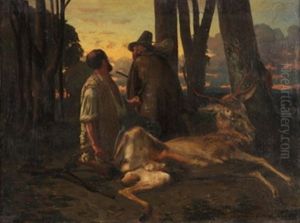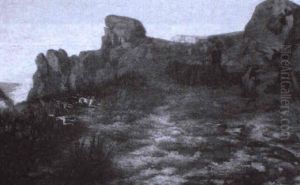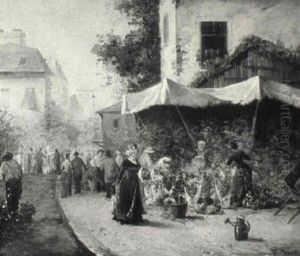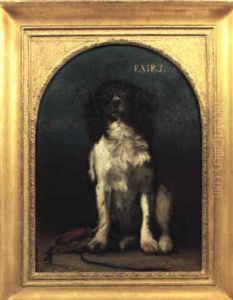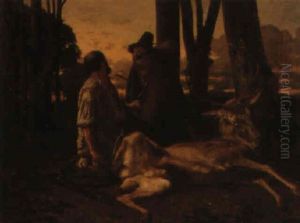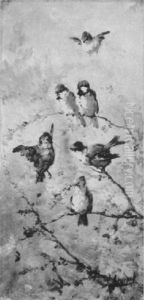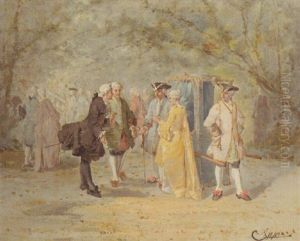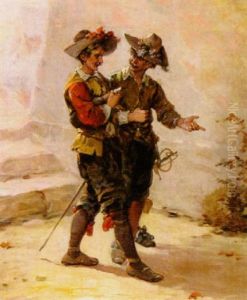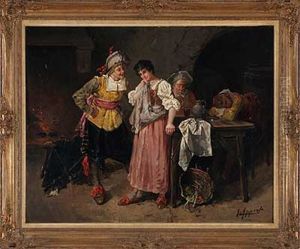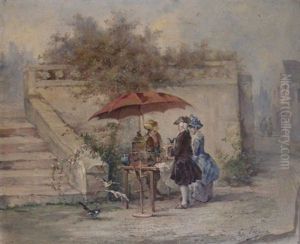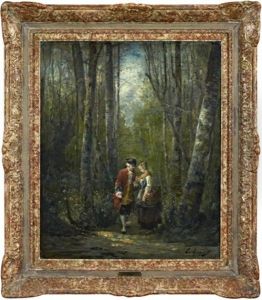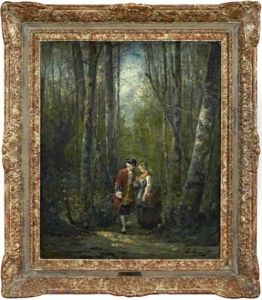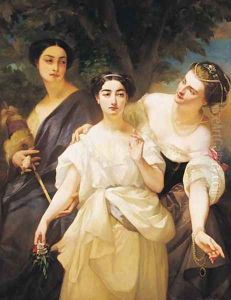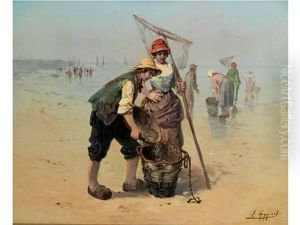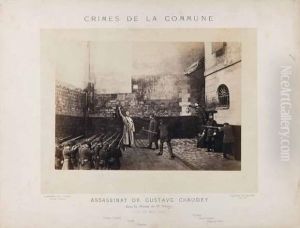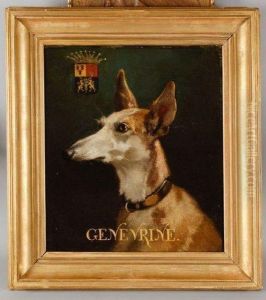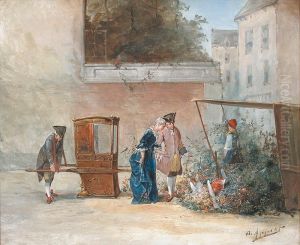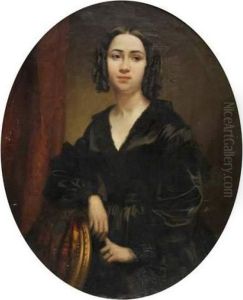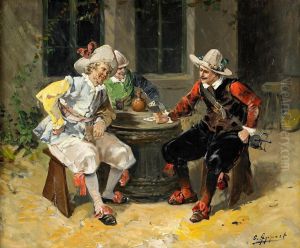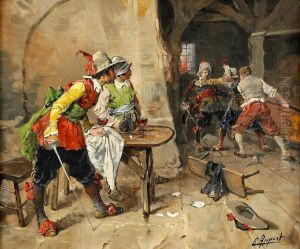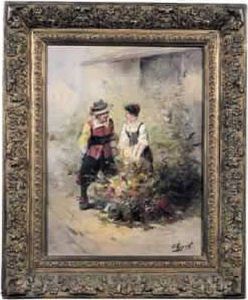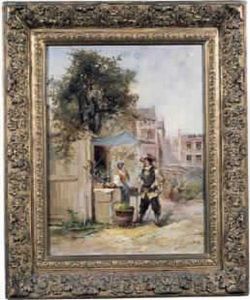Eugene Appert Paintings
Eugène Appert was a French photographer and pioneer in photojournalism, known for his work during the Paris Commune and his later contributions to portrait photography. Born in 1831 in France, Appert began his career in photography in the 1850s, a time when the medium was still in its infancy. He was particularly interested in the potential of photography to document current events and to serve as a historical record.
During the tumultuous period of the Paris Commune in 1871, Appert was commissioned by the Versailles government to document the aftermath of the Commune and the people involved in it. This work resulted in a controversial series of albums titled 'Crimes of the Commune'. These albums contained photographs of Communards, the members of the revolutionary government, juxtaposed with scenes of the destruction they purportedly caused. However, it was later revealed that some of these photographs were staged or altered, casting doubt on their authenticity as historical documents.
Despite the controversy, Appert’s work remains an important early example of photojournalism. His technique of combining portraiture with event photography was innovative for his time. After the Paris Commune, Appert continued to work as a photographer, turning more towards studio portraiture. He photographed many notable figures of his day, contributing to the legacy of 19th-century French photography.
Eugène Appert's work has been studied by historians and art historians alike, not only for its artistic qualities but also for its complex interplay between reality and representation. He died in 1890, leaving behind a body of work that provides a unique window into a pivotal moment in French history.
